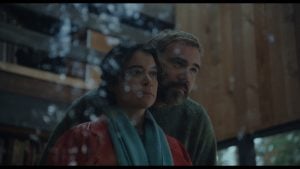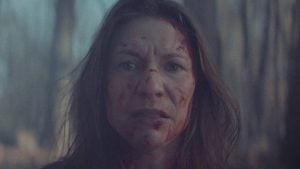Billy Wilder ranks as one of the most heralded and versatile directors to come out of the Hollywood system. With films as varied as Double Indemnity, Stalag 17, Ace In The Hole, Sabrina, and Some Like It Hot, among so many more, Wilder proved to be a master of the cinematic arts on a multitude of occasions. Even with these heavy hitters in his pocket, a career highlight for Wilder would have to be the film that is widely considered the best ever made about the Hollywood system. Sunset Boulevard had its worldwide premiere seventy-five years ago at Radio City Music Hall on August 10, 1950. The film was a success at the time both financially and critically, eventually tallying eleven Academy Award nominations including Best Picture, Best Director and all four acting categories. The legacy of the film, however, has only grown over time to where it is now considered one of the all-time great features. With its eerily tragic story filled with marvelous performances and iconic lines, it is time to revisit this classic feature on its landmark anniversary.
The voice of Joe Gillis (William Holden, Rachel and the Stranger) enters your ears in the opening frames of Sunset Boulevard. Joe was a down-on-his-luck screenwriter who was at the end of his rope, but now he lies floating lifeless in the swimming pool of a mansion on Sunset Boulevard. This is a bold way to begin a film, but the journey to how he got to his current location is even more fascinating. Six months prior, Joe was attempting to sell his latest script to Paramount without much in the way of luck. While he does not get anywhere close to selling a script, he at least gets the pleasure of meeting fiery young script reader Betty Schaefer (Nancy Olson), who accidentally criticizes his script right in front of him. After this failed meeting, Joe flees from some men looking to repossess his car, which leads him to hide in the driveway of the seemingly deserted house of Norma Desmond (Gloria Swanson). Norma is a former silent film star who has been left behind in obscurity. After a brief case of mistaken identity, circumstances lead to Norma hiring Joe to help rewrite the screenplay she has been working on to revive her career. Joe views this as a great way to earn some quick cash, but it soon becomes a Hollywood nightmare.
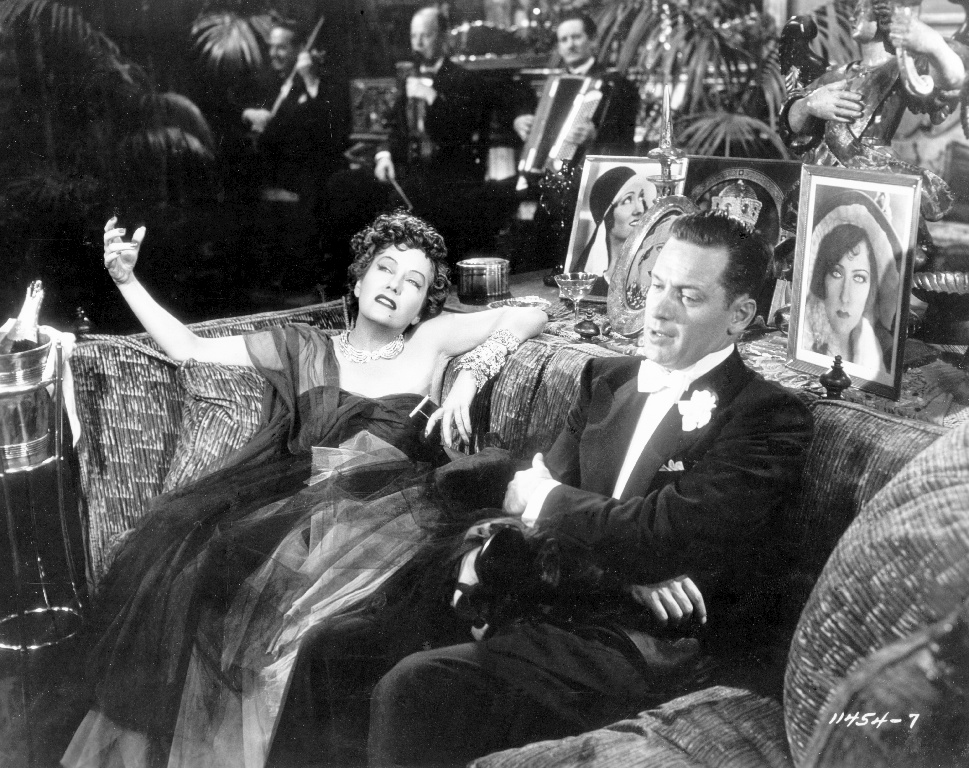
The film is an incisive critique of the toxic way in which Hollywood churns through talent and leaves behind a trail of bruised egos and crushed dreams. Norma was a queen of the cinema when silent pictures were the preferred form of entertainment. As was truly the case for many silent film stars, the advent of sound in pictures mixed with the steady march of time pushed her aside in favor of younger talent that could adapt to using their voice in their performance. This is not much different from the way older people, particularly women, have continued to be treated in many different areas since the film’s release. Norma knows she still has something to contribute, and she will stop at nothing to get back on the silver screen for her “fans.” Swanson delivers one of the most staggering performances from the golden age of Hollywood in this film. A real-life silent star herself, she taps into a frantic energy that makes her both sympathetic and scary. In spite of his protests, Joe eventually relents to becoming more than just a script doctor for Norma until she gets to be a bit too much for him to handle. Through a happy bit of coincidence, Joe reconnects with Betty, and the two begin working on a proper script together. When you are living and working with someone who fears irrelevance more than anything else, it is best if you do not let yourself get entangled with a youthful figure who has her whole life in front of her.
Sunset Boulevard works as a great piece of art about show business in a way that had never been done before. Underneath all the slimy Hollywood dealings, the story of trying to maintain your sanity in the face of the brutish force of irrelevancy is a compelling one. Wilder lovingly shaped a staggering narrative that rings as true in modern times as it did seventy years ago. One of the major keys to this was casting exactly the right people to pull off each role perfectly. This includes appearances by real-life Hollywood figures such as Cecile B. DeMille, Buster Keaton and gossip columnist Hedda Hopper as fictionalized versions of themselves to make the critiques drive home even harder. There are no wasted moments in Sunset Boulevard. Every scene contributes to the overall mood and thesis of the film in ways that are revealed even more upon every viewing. There are many great films in the history of cinema, but fewer are the films that truly change the DNA of cinema upon their release. Sunset Boulevard is such a film, and it still deserves your attention.
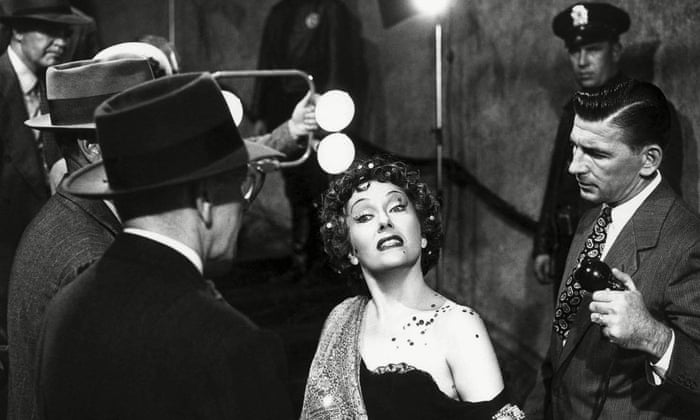
Video Quality
Sunset Boulevard makes its anxiously anticipated 4K UHD Blu-Ray debut with a fetching 2160p/Dolby Vision transfer that handily bests the previous Blu-Ray release. That Paramount Blu-Ray release from 2012 has been released in various forms over the years, so it is nice to finally get a proper upgrade. The Original Camera Negative sadly no longer exists, but the studio has done an admirable job of restoring this to the most pleasing state possible. The original disc was not universally maligned like some Paramount catalog releases from the era, but there was room for significant improvement, which has mostly been achieved here. While this 4K UHD Blu-Ray does not reach absolute perfection, it will be a respectable representation of the film if this is the last stop.
This new 4K UHD Blu-Ray retains a good amount of the natural film grain which provides texture and detail within the transfer. There are nondescript aspects of the production design that can be seen clearly for the first time on home entertainment. The clarity of the transfer brings out a greater amount of facial detail, and the performers appear more textured and multifaceted than ever before. The transfer does have occasional moments that have either encountered unfortunate DNR or inconsistent encoding, which offer a roadblock to the consistent, organic appearance. This is far from the worst we have seen on the format, but we wish Paramount could be a bit more consistent.
The implementation of Dolby Vision brings out so much nuance within the moody black and white cinematography from director of photography John F. Seitz. Highlights are much more robust and contained without veering into blooming. The picture also retains a fantastic amount of detail in the shadowy moments of the journey. Black levels display a much greater depth and control than the Blu-Ray release. Print damage has been virtually eradicated for a clean and consistent viewing experience. We are grateful to have this classic in a superior format.
Audio Quality
The 4K UHD Blu-Ray delivers a Dolby TrueHD 5.1 track along with the original Dolby TrueHD 2.0 track mono version newly restored that are both of commendable quality. The dialogue and background noises are rendered crisp and clear with no obvious sync issues. The pervasive voiceover from Joe Gillis sounds full-bodied in the center channel. Previous instances of age-related wear or popping have been ameliorated for a pleasant sonic experience. The score from Franz Waxman has never sounded better as it maintains a favorable balance with the dialogue that never compromises the presentation. Overall, this is a terrific release that does the film justice. Fans should be happy with the presentation. Optional English, English SDH, and an array of other subtitles are provided.
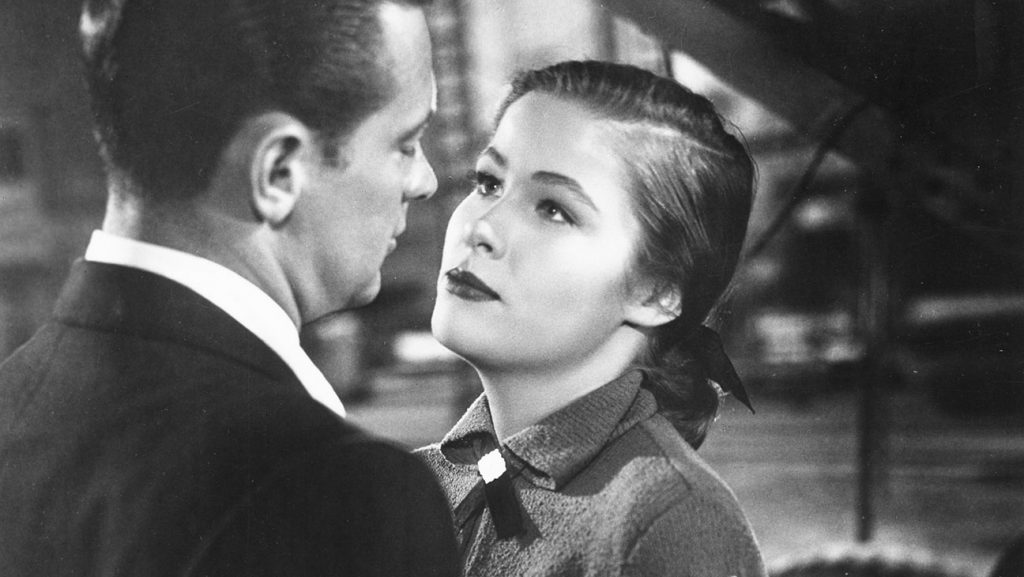
Special Features
- Audio Commentary: Ed Sikov, author of “On Sunset Boulevard: The Life and Times of Billy Wilder,” gives a deep dive into the nuances of the film as he puts elements into historical context, highlights Wilder’s distinct voice within the script, showcases the performers’ style and more. One of the most interesting bits of information comes right up front as he reveals the details for a more morbid opening that was dropped after a failed test screening.
- Sunset Boulevard – The Beginning: A 23-minute featurette with Paramount Pictures Producer A.C. Lyles, Actress Stefanie Powers, Filmmaker Nicholas Meyer, Author Ed Sikov, and Actress Nancy Olson discussing the legacy of the film and the masterful filmmaking from Billy Wilder. There are also some intriguing discussions about Cecil B. DeMille’s involvement with the film, including a funny anecdote from Nancy Olson. Archival footage of Gloria Swanson is included in which she discusses the differences between her and her character.
- Sunset Boulevard – A Look Back: A 26-minute look at the film with most of the same individuals which covers some of the same topics, but provides some interesting additions including a brief talk with Glenn Close. The initial reception of the film is discussed, including the extremely negative reaction from MGM founder Louis B. Mayer.
- The Noir Side of Sunset Boulevard: A 14-minute featurette with acclaimed author and former LAPD Sergeant Joseph Wambaugh in which he discusses the aspects that make the film a subversive noir. He has a wealth of knowledge that helps draw attention to subtle elements that may be easy to overlook on the initial viewing.
- Sunset Boulevard Becomes A Classic: A nearly 15-minute look with at the film’s place in history with Critic Andrew Sarris, Actress Gloria Swanson, Author Ed Sikov, Filmmaker Nicholas Meyer, Actress Glenn Close, and Actress Stefanie Powers. The participants discuss the audience and critical reaction, themes of the film, its dark look at Hollywood, awards and nominations, the picture’s impact on culture, the Broadway musical version, and more.
- Two Sides of Ms. Swanson: An 11-minute talk with Gloria Swanson’s Granddaughter Brooke Anderson and future co-star Linda Harrison in which they discuss the personal and professional life of Gloria Swanson.
- Stories of Sunset Boulevard: An 11-minute look at the opening of the film, Nancy Olsen’s performance, Billy Wilder’s behavior on set and more.
- Mad About the Boy – A Portrait of William Holden: An 11-minute look at the personal and professional life of our leading man, William Holden. There are some nice stories from those who actually were close to him that make this fun to watch.
- Recording Sunset Boulevard: A six-minute look at the classic Franz Waxman score and bringing it back to the public through re-recording the score in 2002 for a commercial album release.
- The City of Sunset Boulevard: A six-minute look at the shooting locations of the film, which are put into historical context by the participants.
- Franz Waxman and the Music of Sunset Boulevard: A 14-minute look at the iconic Franz Waxman score with Film Music Historian John Waxman, Composer Elmer Bernstein, and Composer John Mauceri. In addition to discussing the score itself, the participants also reveal personal details of his upbringing.
- Morgue Prologue Script Pages: The much talked about alternate opening scene is presented here in script form for your perusal.
- Deleted Scene: A minute-and-a-half-long scene entitled The Paramount Don’t Want Me Blues in which the characters sing about rough times in the movie business.
- Hollywood Location Map: An interactive Sunset Boulevard map with clickable icons that lead to short video subjects on the locales.
- Behind The Gates – The Lot: A five-minute featurette on the history of Paramount Pictures, the move from silent to sound, the expansion of the studio and more.
- Edith Head – The Paramount Years: A 14-minute look at iconic costumer designer Edith Head from her humble beginnings to her place as one of the most in-demand designers in the business.
- Paramount In The ‘50s: A ten-minute featurette focusing on the output of Paramount Pictures in the 1950s.
- Galleries: Images are divided into Production, The Movie, and Publicity
- Theatrical Trailer: A three-minute-long trailer that plays up the suspense and talent on display. It gives a pretty thorough overview of the film, but it gives away a bit too much for first-time viewers.
Final Thoughts
Sunset Boulevard is an unassailable classic in the landscape of cinematic history. Billy Wilder’s uncompromising vision, mixed with career-defining performances from Gloria Swanson and William Holden, makes this an evergreen title that will continue finding new fans. The new 4K UHD Blu-Ray from Paramount Pictures Home Entertainment offers up a wonderful A/V presentation along with a comprehensive slate of special features which fans will enjoy digging into. After 75 years in the public consciousness, you owe it to yourself to check this out if you are interested in exploring classic Hollywood. Highly Recommended
Sunset Boulevard is currently available to purchase on 4K UHD Blu-Ray and Digital.
Note: Images presented in this review are not reflective of the image quality of the 4K UHD Blu-Ray.
Disclaimer: Paramount Home Entertainment has supplied a copy of this disc free of charge for review purposes. All opinions in this review are the honest reactions of the author.

Dillon is most comfortable sitting around in a theatre all day watching both big budget and independent movies.


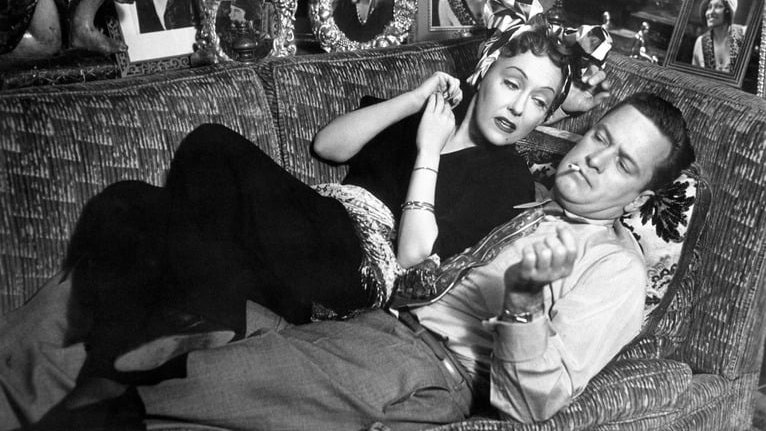

![‘Jay Kelly’ Review – Noah Baumbach Makes A Case For The Magic Of Movie Stardom [NYFF 2025] ‘Jay Kelly’ Review – Noah Baumbach Makes A Case For The Magic Of Movie Stardom [NYFF 2025]](https://cdn.geekvibesnation.com/wp-media-folder-geek-vibes-nation/wp-content/uploads/2025/11/Jay-Kelly-JKELLY_20240523_15320_C2_R-300x180.jpg)
